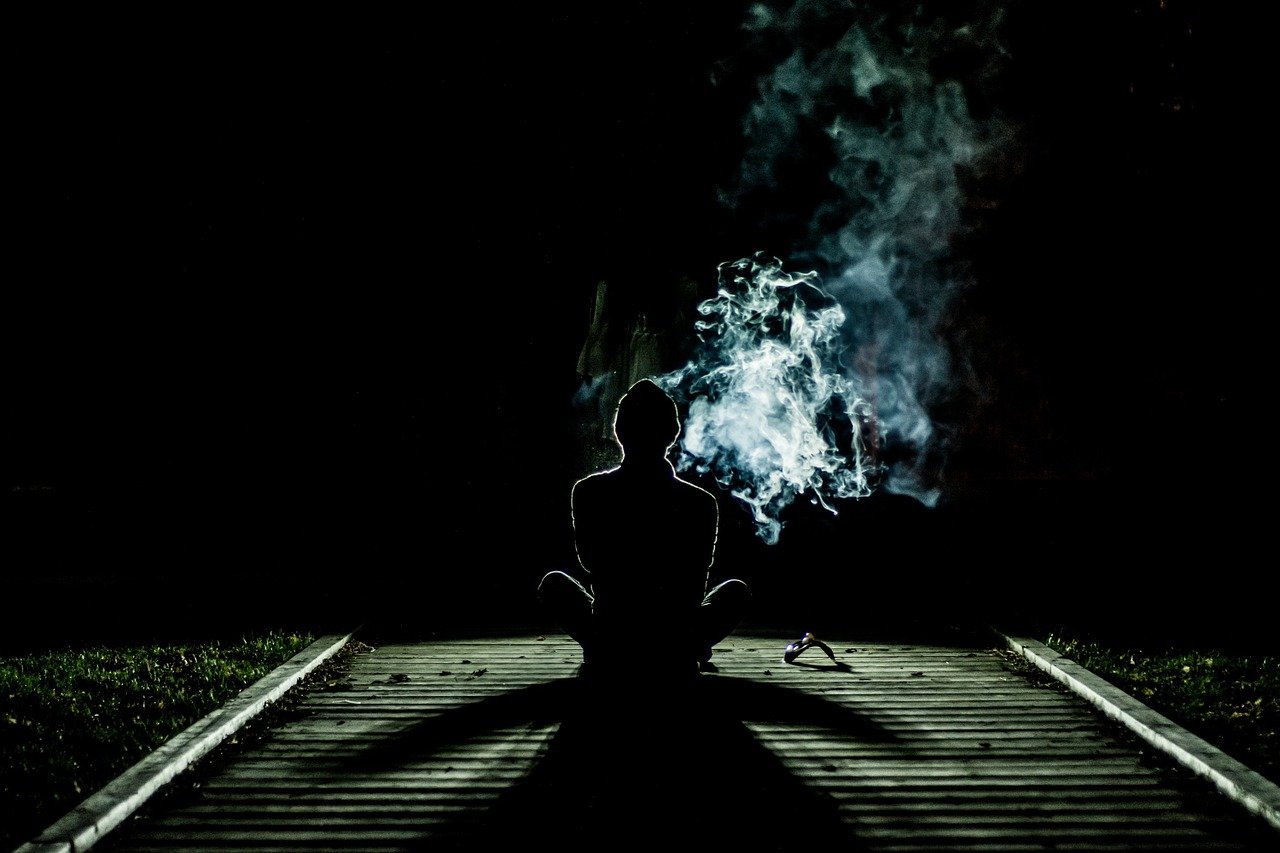

How Does Islam Promote Peace in the World? Part 2
In the previous part of this topic, we emphasized that advertising peace and educating peaceful followers are of the main purposes of Islam. Here we review some more Islamic pieces of advice and lessons on having a balanced life and being in peace with other people of either the same religion or other.
Being Good-Tempered
Being equable and good-tempered, and avoiding irascibility and harsh words are continuously advised to in the Islamic teachings such that Prophet Muhammad (PBUH) is invited in the Quran to “argue with them (unbelievers) in a way that is best” (16:125). Prophet Muhammad (PBUH) and Imams (AS), as role models for Muslims, have demonstrated these acts in a way that the Quran says about the Prophet (PBUH): “And indeed, you are of a great moral character” (68:4). That is why the Quran says about Prophet Muhammad (PBUH): “So by mercy from Allah, you were lenient with them. And if you had been rude [in speech] and harsh in heart, they would have disbanded from about you” (3:159).
Imam Sadiq (AS) has described being good-tempered as: “using friendly words, nice behavior and receiving your brother happily” [1]. Imam Ali (AS) said that the best and most important deed of a “believer” is behaving nicely with people [2]. Even in the case of facing ignorant people, it is encouraged to treat kindly: “And the servants of the Most Merciful are those who walk upon the earth easily, and when the ignorant address them [harshly], they say [words of] peace” (25:63).
These examples and many other Islamic pieces of advice demonstrate how much Islam cares about one’s behavior towards others.
Moderation in All Affairs
This is true that moderation can develop peace. Islam recognizes moderation as the most efficient and pleasant approach in life and interaction with others. Prophet Muhammad (PBUH) said that: “the best of every affair is the middle of it” [3]. The Quran describes Muslims as a moderate community and says that: “we have made you a just community that you will be witnesses over the people and the Messenger will be a witness over you” (2:143). This means that the nation and people who are educated based on the Islamic teachings and the Quranic guidelines will avoid extremes; neither they are radical, nor conservative [4].
However, whenever the truth (Haq) and falsehood (Batil) are clear and apparent, there is no place for moderation. An example is the holy struggle (Jihad); i.e., when land is attacked by others, there should be no moderation and defense becomes obligatory.
The Rights of Non-Muslims in peace
Islam has considered the rights for every being, from parts of the body to neighbors, parents, etc. Then, it is not surprising if Islam also considers some rights for non-Muslims over Muslims. Of the rights of non-Muslims are to believe in the promises they have given the Islamic state; not to bother them about what they want or on what they are obliged to; to judge among them just as God has ordered; not to oppress them since Prophet Muhammad (PBUH&HP) said that he would be against anyone who oppresses a non-Muslim1 [5]. Imam Ali (AS) was sensitive to any harm or injustice to whether Muslims or non-Muslims. He (AS) said that: “if someone is not of your religion, he is still a human being like you.”, he (AS) was therefore against any harm or damage to non-Muslims [6].
Dealing with Others in the Early Ages of Islam
After the rise of Islam, Prophet Muhammad (PBUH&HP) adopted the approach of moderation and fairness with the followers of the previous Abrahamic religions.
Prophet Muhammad (PBUH&HP) defended boldly Muslims and himself whenever needed. He (PBUH&HP) opposed any violence to Muslims, but he (PBUH&HP) still cared about the prisoners of the wars. He (PBUH&HP) had ordered to treat them with moderation, mercy, and humanity, to do good to them and to forgive them. Prisoners were usually kept in the mosques or proper and clean homes. The troops of Islam, following the manner of Prophet (PBUH&HP), preferred prisoners to themselves such that they provided prisoners with better foods and clothes. If a prisoner did not want to reveal the secrets of the enemies, he would not be beaten but whoever did so would be released [7].
Considering the points mentioned above about how Islam educates peaceful followers and how it considers rights for non-Muslims, the role of Islam in promoting peace can be fully grasped. However, this should not be confused that a Muslim must endure every situation or the violation of his\her rights or the rights of the Muslims in general. The key point is that a Muslim chooses the moderation and peace as the first solution to his social affairs as long as it does not require the violation of the rights of one or several people.
1 Here, the term “non-Muslim” refers only to a non-Muslim who is the citizen of an Islamic state or a non-Muslim who lives in a non-Muslim country which is in agreement with Muslims.
References:
- Ibn Babawayh, "Man la yahduruhu al-Faqih," vol. 4, p. 412.
- Ibn Shu'ba al-Harrani, "Tuhaf al-'uqul," p. 200.
- Allama Majlisi, “Bihar al-Anwar,” vol. 74, p. 383.
- Reference to: “How and why did Islam spread very quickly throughout the world? – Part 4: Islam and its moderate views.”
- Imam Zayn al-'Abidin (AS), “Treatise On Rights (Risalat al-Huquq).”
- M. al-Kulayni, "Kitab al-Kafi."
- peace in islam
Share This Article

Drugs, an unimaginable attack on our health
As we all know, human life is on an extremely fast pace of progress that is made possible by human expeditions and exploration. But no one can say for sure that all the achievements of this progress have been used on the righteous path. Some of these explorations are known as a forward leap in human history just like dynamite that has been used to ease miner’s jobs. But the same invention has also been used as a deadly weapon against thousands of innocent humans. Obviously, Islam did not miss this point about human life and gave advice to all Muslims in this regard: “Islam forbids eating, drinking and consuming things that are harmful to human health. The more harmful it is, the more severe the prohibition of its cause and effect, to the extent that it reaches the level of sanctity.” (1)
Now, we are going to talk about narcotics, the basis of all of the soothing medicine that are used as one of the essential materials in the ancient times surgery but is also used by heedless people for entertainment at the expense of decomposing their body and brain.
Narcotics are the most common cause of death and disability in the world that exacerbates many diseases, including cardiovascular, pulmonary, infectious diseases, cancer, bone diseases, gastrointestinal diseases, hearing problems, and oral diseases. In every 8 seconds, one person in the world dies of diseases caused by narcotics; fortunately, with the advancement of science and technology and optimal information, the level of awareness of people about the effects of narcotics on their health has increased. We will see what advice Islam gave us on the issue of using narcotics for mortal pleasure.

The opinion of some of the leaders of Islam about Drugs
As we said before, Islam forbids consuming materials that are harmful to human health to the extent that even on some occasions it reaches the level of taboo. Imam Khomeini, the first leader of the Islamic Republic of Iran said: "Eating something that is harmful to human beings is forbidden."(1) It is obvious that the criterion for being haram (forbidden) is to have harmed, and it does not matter whether this harm goes through eating or in some other way. Drugs is one of the things that harm human health, but is it harmful to the extent that makes it forbidden to use?
Many physicians and practitioners are following the opinion that narcotics has significant harms and have written numerous books on the dangers and diseases caused by narcotics, especially smoking. Therefore, it can at least be claimed that the harmful effects of smoking to human health vary based on the person and the situation. On this basis, some jurists have considered the extent of the forbiddance of narcotics to the level of absolute religious prohibition. Some other leaders have not seen the extent of the damage to the extent that could lead to an absolute ban on smoking. For example, if a person has heart disease and his doctor strictly forbids him from smoking, smoking is forbidden for him. (2)
Not only Imam Khomeini, but also Ayatollah* Makarem Shirazi said: It is forbidden to eat or drink something that is significantly harmful to human beings. Smoking cigarettes and other types of tobacco is also haram if it has significant harm, but the use of narcotics is absolutely haram (3), whether in the form of injection or smoking or eating or in any other ways; also the production, sale and assistance in spreading it, is forbidden. (3)
Grand Ayatollah Sistani gave guidance to Muslims in this matter: If smoking and tobacco -though in the future- causes significant harm to the body to the amount that is feared by the wise person, it is haram for being safe from the major harm caused by it. There is no problem with moderate smoking, however. (4)
Conclusion
As we think about this matter reasonably, we surely would understand an important point:
1. Why should we harm ourselves for a little mortal entertainment?
2. What price should we pay for this kind of entertainment?
Just think and you will see how important abstaining from narcotics is. Live safely in the light of the Quran.
References:
- Majma Al-Masayel (third volume – page 65)
- Islamic Laws (Second volume – page 600)
- Jame Al-Masayel (First volume – page 578)
- Islamic Laws (Second volume – page 600)
- The official site of Ayatollah Sistani
* Ayatollah is an honorific title for high-ranking Twelver Shia clergy in Iran and Iraq that came into widespread usage in the 20th century.
Read More

4 Effects of Fasting in Ramadan
Fasting in Ramadan is an essential Muslim Ritual. Muslims fast during the month of Ramadan, meaning that they try to stand against all human temptations. They do not eat and drink from dawn to dusk, besides trying not to do all the evils which they are ordered no to do, like telling lies, backbiting, etc. Quran insists on the importance of fasting in many verses. The most relevant Quranic reference to Fasting in Ramadan is as follows:
"O you who have faith! Prescribed for you is fasting as it was prescribed for those who were before you, so that you may be God-wary. That for known days. But should any of you be sick or on a journey, let it be a [similar] number of other days. Those who find it straining shall be liable to atonement by feeding a needy person. Should anyone do good of his own accord, that is better for him, and to fast is better for you, should you know." (2: 183-184)
But what are the effects and the outcomes of Fasting in Ramadan? Why does the holy Quran insist on Fasting, calling it a ritual for the believers to come to Allah's way? Let's study a few purposes and effects of fasting together.
1. Fasting in Ramadan and Growing Patience
Fasting in Ramadan is a great help in growing patience. Tolerating hunger and thirst for long hours makes one more tolerant. It augments the power of self-control, be it physically or mentally, control over habits and putting aside bad and wrong behaviors. Prophet Muhammad (PBUH&HP) calls Ramadan the month of patience: "O people, surely there is a month in which exists a night, worthier than a thousand nights, and that's the month of Ramadan. Allah obliges us to fast, and that is the month of patience." [1]
2. Getting Closer to Allah and Serving Him Better by Fasting
According to the verse above (2: 183), the purpose of Fasting is getting closer to Allah, and being more devoted to Him. This verse is referring to the reality behind those hardships, which is finding a better self and a more Allah-knowing creature. And this is the path of perfection for each of us. It brings us good, both here and in the afterlife [2] Besides, through submitting to Allah's will, despite its challenges and hardships, we learn to serve Him under any circumstances and lay our trusts on whatever He had destined for us. Fasting in Ramadan is a chance to remind us that Allah's command is above any of our desires and wishes, and at the same time, His will undoubtedly results in our own benefit.
3. Building a Better Afterlife
Fasting is a ritual that is done just for Allah. One who fasts is only considering the satisfaction of Allah, and that is their ultimate goal. As a result, Allah gives extra values to those who fast. He considers his/her sleeping worship, his/her silence a remembrance of Allah. He accepts his/her rituals and responds to his/her Dua [3]. Prophet Muhammad (PBUH&HP) narrates that Allah said: "fasting is for me, and I AM the one who praises that." [4] This has a lot to say; it shows the greatness of the strives of human beings to keep themselves away from sins and also eating, drinking, and sexual intercourse. He has created us and knows the difficulty, and He is the one who best knows how to praise the efforts of His own creatures.
4. Mental and Physical Health, Resulted from Fasting
According to a research done on the effects of fasting on growing self-esteem, reducing stress and depression and better mental health on 60 medical students, it's been concluded that the test takers who fast had higher self-esteem, less depression, and anxiety, obsession, phobia, paranoid thoughts, hostility, etc. [5]
Besides its beneficial mental effects, Fasting has great impacts on physical health. Our body uses the sources of unused energy inside during Fasting, and that causes the repulse of many toxic combinations in our body. Some medical practitioners believe that Fasting is a great cure for cancer. It also cures many digestive diseases in the stomach, intestines, and bladder. In another study on medical students, the results showed that Fasting had a significant effect on the immunity of their cells and total better cell activity [6].
These are just some of the purposes of Fasting. One needs pages to write about the positive effects of this ritual. In our other articles, we will discuss Fasting more.
References:
- Thavab-al-Ammal, p 143
- Kanzol Ammal, Hadith 564
- Savvab ol Ammal, p 77
- Saduq, "While there is no Faqih," Vol. 2. P 43
- Javanbakht, Maryam (2010) Study on the effects of fasting in the month of Ramadan on self-esteem and mental health of medical students Fundamentals of Mental Health, Pp 73-266
- The effects of Fasting from the Medical Practitioner's point of View, Zanjan University at
Read More

